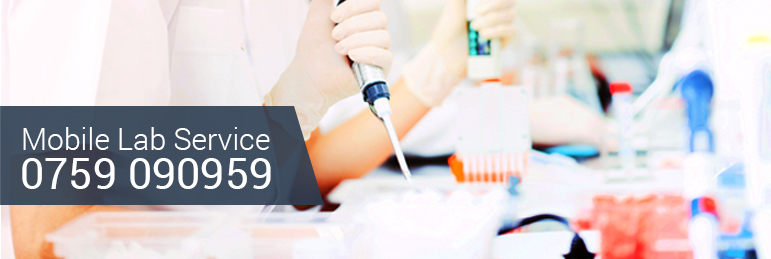
Diabetes Triggers
In short, anyone. Diabetes transcends age, gender, social status, caste or creed, job and race. Anyone can be susceptible to diabetes if they do not understand the risks associated with it.
-Read More-
About Diabetes
Diabetes is a group of diseases characterized by high blood glucose levels that result from defects in the body's ability to produce and/or use insulin.
-Read More-
Can I get Diabetes?
Anyone can get diabetes. Learn about the risks and symptoms of diabetes and how to avoid it.
-Read More-
Non-modifiable risks
Age:
The risk of diabetes (type 2) increases with age as the body struggles to create enough insulin to combat the levels of blood sugar. Although risk of developing diabetes has been stated to be around 40 years of age, it has been affecting younger adults and even children.
Family history:
Those who have a history of diabetes in the family are more likely to develop diabetes.
Race or ethnicity:
Research has shown that certain races are more prone to diabetes than others. However, it could be due to genetic or environmental factors or nutritional factors especially at a very young stage.
Modifiable risks
Abnormal nutrition
Nutrition plays a major role in the development of type 2 diabetes. It’s important to have a balanced and healthy diet to make sure that the body is able to produce the use insulin as intended. Both over and undernutrition can cause type 2 diabetes. Undernutrition during pregnancy can increase the risk of insulin resistance in the child, while overnutrition can lead to being overweight and obesity resulting in early development of type 2 diabetes.
Physical Inactivity
This is the most significant risk factor. Inability to engage in regular physical activity to maintain ideal body weight can result in the development of type 2 diabetes.
Pre-diabetes
Impaired Fasting Glycaemia (IFG) or Impaired Glucose Tolerance (IGT) puts you at an increased risk and should be actively corrected through proper nutrition, exercise, and stress control.
Diabetes during pregnancy (gestational diabetes)
Gestational diabetes poses a risk to both mother and child unless it is properly monitored and correct treatment is administered to control the onset of diabetes.
Stress
Stress related hormonal and metabolic changes are associated with nutrition, psychosocial problems may cause imbalances in the body that may put individuals at a higher risk for the development of diabetes. Infections along with the above pose an additional risk factor for the development of type 2 diabetes.
Symptoms of diabetes
Early detection and treatment of diabetes greatly reduces the risks of diabetes related complications that can develop over time. Here are a few typical symptoms of diabetes. If you think you have any of these symptoms, however mild they may seem please contact [contact information]
- Urinating often
- Ants around urinal or toilet
- Feeling very thirsty
- Feeling very hungry, even though you have regular meals
- Extreme fatigue
- Blurry vision
- Cuts or bruises that take long to heal
- Experiencing cramps in your limbs
- Weight loss even though you are eating more
- Tingling pain or numbness in hands or feet
What is Diabetes?
Diabetes is a group of diseases characterized by high blood glucose levels that result from defects in the body’s ability to produce and/or use insulin.
Type 1
Usually diagnosed in children and young adults, this form of diabetes means the body does not produce insulin. Type 1 diabetes also used to be known as juvenile diabetes.
Insulin is the hormone that converts sugar, starches and other food items into energy that the body needs to sustain life. Although this form of diabetes is rare, those who are affected need to obtain insulin therapy in order to lead a normal life. Once diagnosed with type 1 diabetes, patients must learn to manage the condition through insulin therapy, controlled diet and other treatments in order to live a happy and healthy life.
Type 2
Develops when blood sugar levels rise higher than normal. This is the most common form of diabetes.
In type 2 diabetes, the body does not use insulin properly and is called insulin resistance. At first the pancreas creates more than the required level of insulin to combat the resistance. But, over time it isn’t able to keep up with the requirement, which results in increased blood glucose levels. Type 2 diabetes generally develops in adults over the age of 40, although in recent times there have been patients from younger age groups. Type 2 diabetes can be controlled if detected early by living a healthy lifestyle; that includes exercise, healthy and wholesome diet and other treatments.
Gestational Diabetes
Develops when expecting mothers have a higher than normal level of blood sugar. This usually happens during the 24th week of pregnancy.
Gestational diabetes does not mean that you had diabetes before the pregnancy or that you will have diabetes after giving birth. However, it could lead to later complications in mother and baby if the blood sugar levels are not controlled. If diagnosed with gestational diabetes, doctors advice must be followed in order to ensure both mother and baby are healthy. There can be instances where gestational diabetes can continue after childbirth in the mother or baby, or both.
Can I get Diabetes?
Non-modifiable risks
Age:
The risk of diabetes (type 2) increases with age as the body struggles to create enough insulin to combat the levels of blood sugar. Although risk of developing diabetes has been stated to be around 40 years of age, it has been affecting younger adults and even children.
Family history:
Those who have a history of diabetes in the family are more likely to develop diabetes.
Race or ethnicity:
Research has shown that certain races are more prone to diabetes than others. However, it could be due to genetic or environmental factors or nutritional factors especially at a very young stage.
Modifiable risks
Abnormal nutrition
Nutrition plays a major role in the development of type 2 diabetes. It’s important to have a balanced and healthy diet to make sure that the body is able to produce the use insulin as intended. Both over and undernutrition can cause type 2 diabetes. Undernutrition during pregnancy can increase the risk of insulin resistance in the child, while overnutrition can lead to being overweight and obesity resulting in early development of type 2 diabetes.
Physical Inactivity
This is the most significant risk factor. Inability to engage in regular physical activity to maintain ideal body weight can result in the development of type 2 diabetes.
Pre-diabetes
Impaired Fasting Glycaemia (IFG) or Impaired Glucose Tolerance (IGT) puts you at an increased risk and should be actively corrected through proper nutrition, exercise, and stress control.
Diabetes during pregnancy (gestational diabetes)
Gestational diabetes poses a risk to both mother and child unless it is properly monitored and correct treatment is administered to control the onset of diabetes.
Stress
Stress related hormonal and metabolic changes are associated with nutrition, psychosocial problems may cause imbalances in the body that may put individuals at a higher risk for the development of diabetes. Infections along with the above pose an additional risk factor for the development of type 2 diabetes.
Symptoms of diabetes
Early detection and treatment of diabetes greatly reduces the risks of diabetes related complications that can develop over time. Here are a few typical symptoms of diabetes. If you think you have any of these symptoms, however mild they may seem please contact [contact information]
- Urinating often
- Ants around urinal or toilet
- Feeling very thirsty
- Feeling very hungry, even though you have regular meals
- Extreme fatigue
- Blurry vision
- Cuts or bruises that take long to heal
- Experiencing cramps in your limbs
- Weight loss even though you are eating more
- Tingling pain or numbness in hands or feet
Interesting facts about Diabetes
Here are a few interesting facts about diabetes and it’s penetration throughout the world.
- There is NO CURE for diabetes
- Diabetes increasing in pandemic proportions
- In 2011, 366 million people (8.3%) worldwide were affected by diabetes and 280 million people (6.4%) were affected by Impaired Glucose Tolerance (IGT). Numbers are expected to rise to 552 million (9.9%) for diabetes and 398 million (7.1%) for IGT by 2030.
- In 2011, 71.4 million people (8.3%) in South East Asia were affected by diabetes and 23.8 million people (2.8%) were affected by Impaired Glucose Tolerance (IGT). Numbers are expected to rise to 120.9 million (10.2%) for diabetes and 38.6 million (3.2%) for IGT by2030.
- 183 million people (50%) with diabetes are undiagnosed.
- 80% of people with diabetes live in low-and middle-income countries.
- Diabetes is the 4th or 5th leading cause of death in most high-income countries.
- Almost one-fifth of the world’s people with diabetes live in South-East Asia Region.
- Diabetes caused 4.6 million deaths in 2011 (8.2% of global all-cause mortality).
- Diabetes will cause 10 million deaths by 2030.
- Approximately 8 people die every minute from diabetes related causes
- Half of the deaths below the age of 60 are caused by diabetes related causes
- 18 people develop diabetes every minute
- Adopting a healthy diet and increasing physical activity can reduce the development of Type 2 Diabetes up to 80%
- 50% or more of people with diabetes die of cardio vascular disease, heart and strokes.
- Diabetes is responsible for over 1 million amputations each year.
- 2.5 million people develop blindness each year due to diabetes
- 20% of people with diabetes die of renal failure.
- More than 2.5 million people worldwide are affected by diabetic retinopathy.
- On average, people with diabetes will die 5-10 years younger than people without diabetes and mostly due to cardiovascular disease.
- It has been estimated that between 5-10% of the total healthcare spending of the world is spent on diabetes related conditions.
The National Diabetes Center provides a host of services that will help you identify, manage and control diabetes.
What are the services available at NDC?
Single Visit Screening
Single Visit Screening is designed to detect complications of diabetes that includes a complete physical and biochemical assessment. NDC has two screening packages available:
- Standard Screening Package – Rs. 3,500.00
Standard screening package includes:
- FBS
- Lipid Profile
- HbA1c
- Serum creatinine
- ECG
- Urine Albumin/Sugar
- Microalbumin
- Eye check including fundal
- photography
- Neuropathy Assessment
- Full physical assessment
- Doctor’s Consultation
- Executive Screening Package – Rs. 5,500.00
Executive screening package includes:
- FBS
- Lipid Profile
- HbA1c
- Liver Profile
- Renal Profile
- ECG
- Eye check including fundal
- photography
- Neuropathy Assessment
- Full physical assessment
- Doctor’s Consultation
Wellness Program
Wellness is a holistic approach to healthy living, focusing on the complete physical, mental and social aspect of healthy living. It’s an active process of becoming aware of elements of a healthy lifestyle and being able to make healthy choices to improve your overall lifestyle.
Our wellness program isn’t just for those with diabetes or those at risk of diabetes; it is for everyone. Biochemical and clinical assessments together with scientific study and measurement of the individual’s body is used to determine areas that need to be improved. Individuals who are at risk of diabetes will be automatically referred to a medical office who will provide lifestyle modification advice on a regular basis.
Eating a well-balanced diet is essential in taking care of yourself. Regular physical activity is equally important for maintaining a healthy and balanced life. Combining a well-balanced diet with physical activity is extremely important for those who have diabetes and are at the risk of diabetes.
Food
People with diabetes have the same nutritional needs as anyone else. The key is to plan your meals to help manage diabetes. After all diabetes shouldn’t keep you from eating a wide variety of foods including some of your favorites.


So what can I eat?
Living with diabetes does not mean giving up all your favorite types of foods. It’s all about planning and making healthy food choices. Replace some of the key ingredients in your meals to make your favorite dish a healthy one.
Basics
Here are some of the basic healthy meal choices that we can make.
Rice – Replace white rice with high-fiber red rice. If you use rice flour try using rice flour that is made out of red rice.
Non-starchy vegetables – Vegetables classified as non-starchy are full of minerals and vitamins, and they contain very few calories and carbohydrates. Here are some of the most popular non-starchy vegetables:
- Asparagus
- Beans
- Beetroot
- Broccoli
- Cabbage
- Carrot
- Cauliflower
- Celery
- Cucumber
- Eggplant (Brinjals)
- Greens (gotukola, mukunuwenna, spinach, kankung, kathurumurunga)
- Leeks
- Mushrooms
- Ladies fingers (Okra)
- Onions
- Tomato
- Turnips
- Yams
- Yard-long beans (maa karal)
- Raddish
- Drumsticks (Murunga)
- Bittergourd
Fruits: Fruits are a great source of vitamins and minerals just like vegetables. But they do contain carbohydrates, so you must count them as part of your diet. Having a slice of fruit as a dessert can be a great way to satisfy your sweet tooth.
Meats: Switch to fish or chicken. Fish is high in proteins and low in fat. Prepare chicken without the skin for less saturated fat.
Grains: Green gram, cowpea, gram, red rice, mineri, olu rice, whole wheat flour, soya, uludu, kurakkan.
Dairy: Dairy products are high in calcium and vitamin D and protein. Best choices are non-fat milk, non-fat yoghurt, unflavoured soy milk.
Drinks: Water, unsweetened teas, coffee, unsweetened fruit juice
Fitness
Physical exercise does not mean dragging yourself to a gym and forcing yourself to workout. Physical activity is essential and anything that gets you moving and burning calories can be considered as such. Dancing, walking, jogging, working in the garden, bicycling can be fun ways of incorporating physical activity into your daily routine. Here are some of the benefits of regular physical activity:
- Lowers blood sugar
- Lowers blood pressure and cholesterol
- Lowers risk of heart disease and stroke
- Burns calories and helps you to lose and maintain weight
- Increases your energy for daily activity
- Relieves stress
- Improves blood circulation
Latest News
Screening Packages
Standard Screening Package
Includes FBS / Lipid Profile / HbA1c / Serum creatinine / ECG / Urine Albumin/Sugar / Microalbumin / Eye check including fundal / photography / Neuropathy Assessment / Full physical assessment / Doctor’s Consultation
Executive Screening Package
Includes FBS / Lipid Profile / HbA1c / Liver Profile / Renal Profile / ECG / Eye check including fundal / photography / Neuropathy Assessment / Full physical assessment / Doctor’s Consultation





